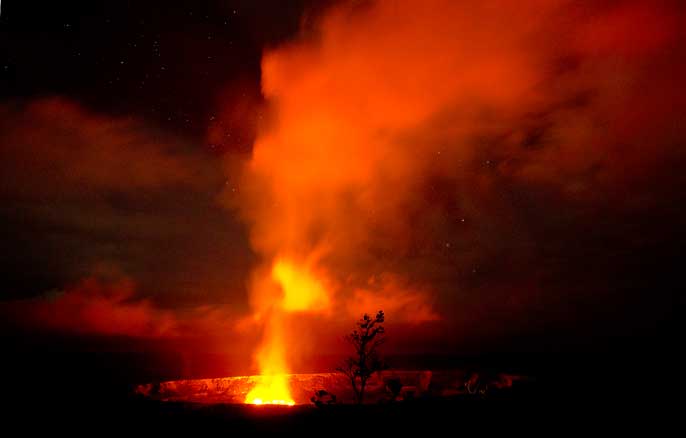|
You are viewing ARCHIVED content published online before January 20, 2025.
Please note that this content is NOT UPDATED, and links may not work. For current information,
visit https://www.nps.gov/aboutus/news/index.htm.

NPS/Mark Wasser
Contact: Jessica Ferracane/Public Affairs Specialist , 808-985-6018 Tips for an optimal viewing experience Hawaii National Park, Hawai'i –Thousands of additional visitors are flocking to Hawai'i Volcanoes National Park to witness the large lava lake steadily rise at the summit of Kīlauea volcano. Over the last several days, visitors waited up to 30 minutes or longer to park. To ease traffic once the Jaggar Museum and Kīlauea Overlook parking lots fill up, rangers are currently redirecting vehicles during peak visitation hours to park at the Kīlauea Military Camp ball field. From there, visitors can hike one mile to the Jaggar Museum observation deck, the closest and best vantage point to view the spectacular lava lake. "Visitors should come prepared to ensure a safe and enjoyable park experience," said Superintendent Cindy Orlando. "We encourage people to avoid peak hours, and arrive after 10 p.m. and before 4 a.m. if possible, or they will likely wait in line for parking. The park remains open 24 hours a day," she said. Tips for an optimal viewing experience:
In addition, the public is reminded that park entrance fees apply and that the use of unmanned aircraft (drones) is prohibited in all national parks. -NPS- 
NPS/Mark Wasser |
Last updated: April 29, 2015
